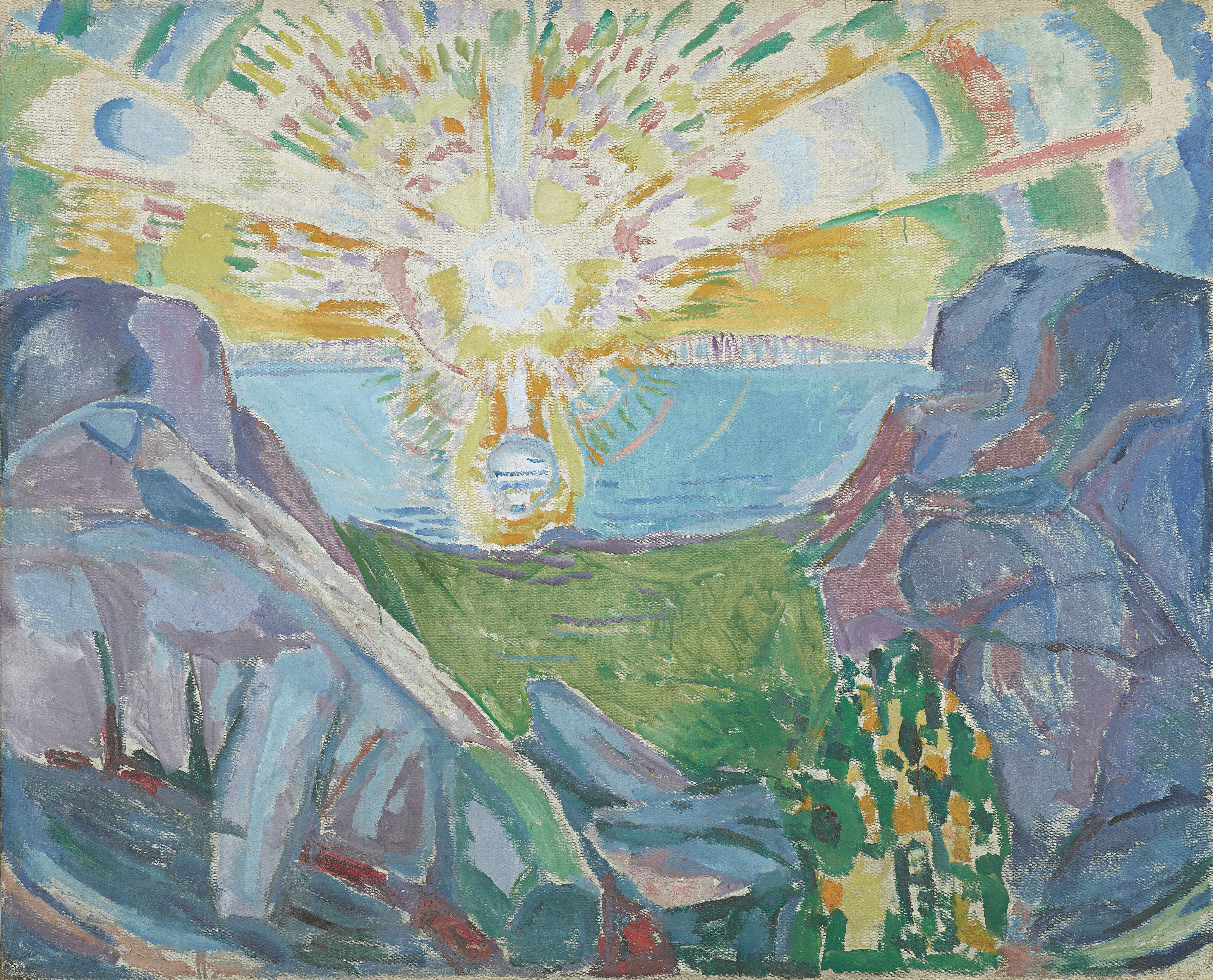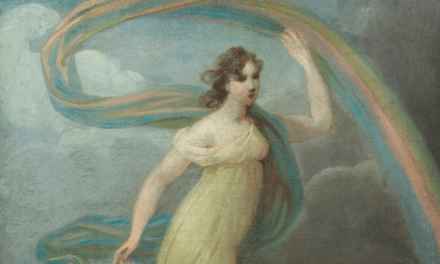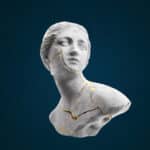Edvard Munch's art is known for its haunting depictions of deep human emotions. However, his fascination with nature plays an equally important role in his works, which is now being addressed in an exhibition for the first time. "Munch. Lebenslandschaft" is dedicated to the scientific and philosophical influences on his work and opens up his work as a resonance chamber for today's climate crisis.
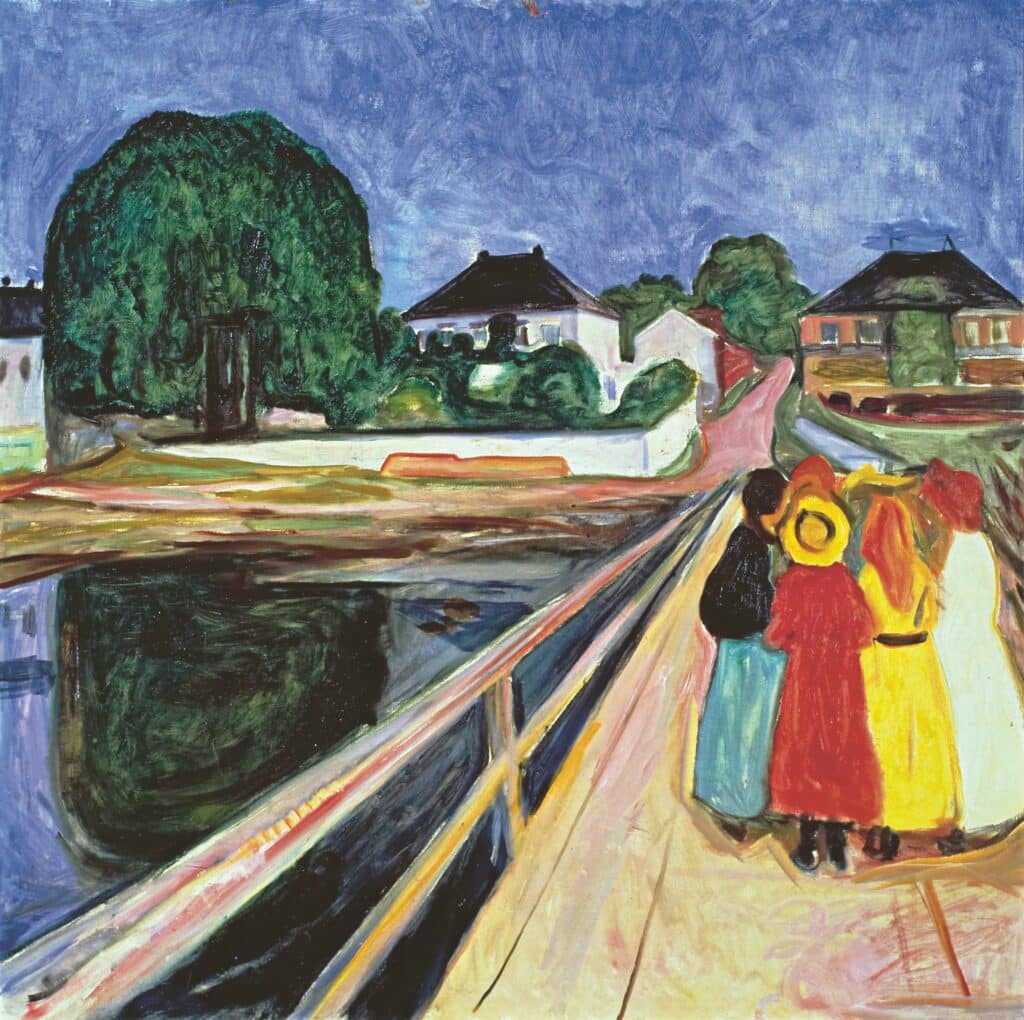
Edvard Munch, The Girls on the Bridge, 1902, Oil on canvas, 100 × 102 cm, Private collection © Photo: Pyms Gallery, London
On the one hand, Edvard Munch understood nature as a cyclically renewing force; on the other, he saw it as a mirror of his inner turmoil. Munch developed a pantheistic understanding of nature, which he projected onto the Norwegian coasts and forests. The dramatic weather conditions in his paintings take on a surprising poignancy against the backdrop of the current climate crisis.
In Edvard Munch's time, the understanding of nature changed radically. Under the influence of new discoveries in biology, physics, medicine and geology, nature was no longer perceived as something static and tangible, but as something dynamic and constantly in motion. People developed an awareness of processes that are invisible to the naked eye - be it slow changes of great significance such as continental drift and the development of species or the teeming mass of bacteria that can only be seen under a microscope. The boundaries between humans and animals, between plants and minerals shifted, became blurred and were partially erased.
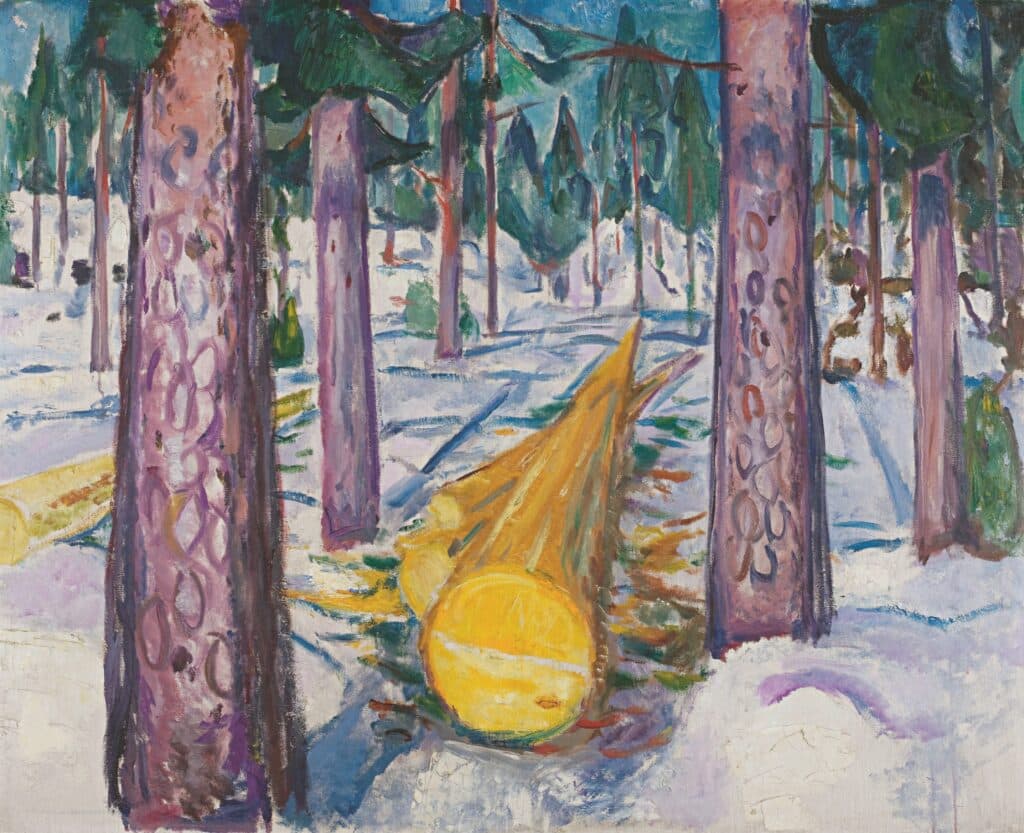
Edvard Munch, The Yellow Log, 1912, Oil on canvas, 129.5 × 159.5 cm, Munchmuseet, Oslo
Edvard Munch depicted this lively, dynamic and changing nature in many of his works. Storms and human intervention in nature are just as much a theme in his paintings as moving masses of earth with humanized features. Intertwined bodies unite with the earth. In some paintings, Munch had man and woman floating weightlessly through space. In one text, he described this subject as follows: "The fates of people are like the planets; they meet in space only to disappear again immediately." In this way, the artist linked the driving forces and desires of human beings with cyclical, universal forces.
The exhibition features around 90 works from international lenders, including the Munchmuseet, Oslo, the Museum of Modern Art, New York, the Dallas Museum of Art, the Staatsgalerie Stuttgart, the Museum Folkwang, Essen, and the Von der Heydt-Museum, Wuppertal.
November 18, 2023 to April 1, 2024
Parallel to the Potsdam show, a second exhibition is dedicated to Munch and Berlin: "Edvard Munch. Magic of the North" at the Berlinische Galerie (until January 22, 2024). The museums offer a combined ticket to visit both exhibitions.

